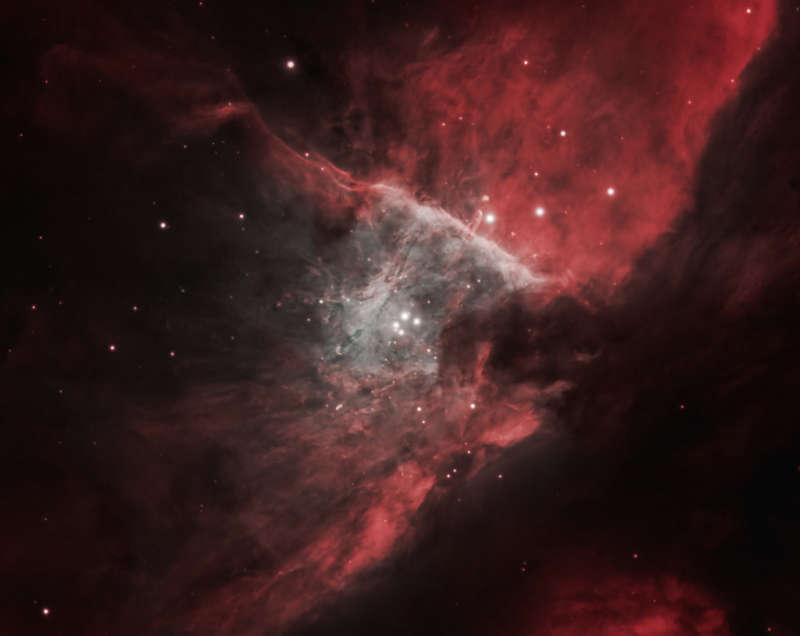
|
Credit & Copyright: Fred Zimmer,
Telescope Live
Explanation:
Near the center of
this sharp cosmic portrait, at
the heart of the Orion Nebula,
are four hot, massive stars
known as
the Trapezium.
Gathered within a region about 1.5 light-years in radius,
they dominate the core of the dense Orion Nebula Star Cluster.
Ultraviolet
ionizing radiation from the
Trapezium stars,
mostly from the brightest star
Theta-1 Orionis C
powers the complex star forming region's entire visible glow.
About three million years old, the Orion Nebula Cluster was
even more compact in its younger years and a
dynamical study
indicates that
runaway
stellar collisions
at an earlier age may have formed a
black hole
with more than 100 times the mass of the Sun.
The presence of a
black hole within the cluster
could explain the observed high velocities of the
Trapezium stars.
The Orion Nebula's distance of some 1,500 light-years would make it one
of the
closest known
black holes
to planet Earth.
|
January February March April May June July August September October November December |
| ||||||||||||||||||||||||||||||||||||||||||||||||
NASA Web Site Statements, Warnings, and Disclaimers
NASA Official: Jay Norris. Specific rights apply.
A service of: LHEA at NASA / GSFC
& Michigan Tech. U.
Based on Astronomy Picture
Of the Day
Publications with keywords: M 42 - Orion Nebula
Publications with words: M 42 - Orion Nebula
See also:
- Orion and the Running Man
- APOD: 2025 August 13 Á Trapezium: In the Heart of Orion
- APOD: 2025 April 20 Á The Orion Nebula in Visible and Infrared
- APOD: 2024 November 4 Á M42: The Great Nebula in Orion
- APOD: 2024 September 10 Á Horsehead and Orion Nebulas
- APOD: 2023 October 10 Á Hidden Orion from Webb
- M43: Streams of Orion
